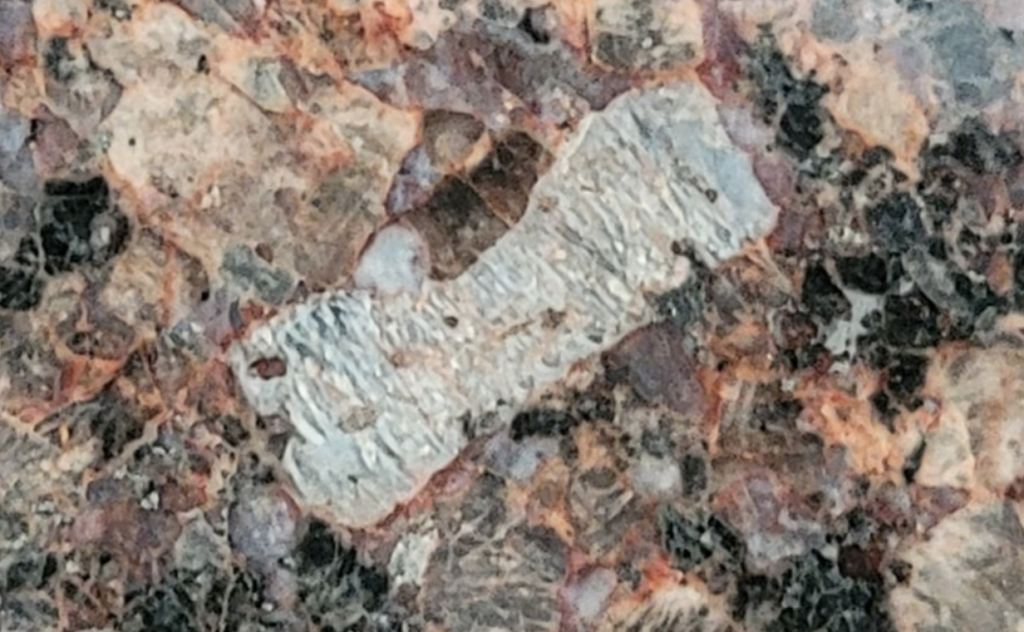While I am used to thinking of granite as an evenly but coarsely textured rock consisting of quartz, feldspars and micas, it is also the case that it can take on very different appearances.
One reason for a different appearance may be that the composition varies from ‘prototypical’ granite, say, with more feldspar, or more quartz, etc. Basically, if one moves around the QAPD diagram, variations in composition can lead to different appearances.
A second reason for a different appearance may be that in the case of certain minerals — Feldspars (and apparently quartz as well) – they may be comfortably intermixed at higher temperatures and pressures, but as they cool (either slowly, or in the presence of water), the may pass through a phase where the different minerals become immiscable and sort themselves out (exsolution), resulting in a distinctive texture. Examples below.
Graphic Granite
According to perplexity, graphic granite forms from the slow cooling of magma with large proportions of quartz and K-feldspar. The quartz and feldspar crystalize simultaneously, with the quartz growing in a specific orientation (toptactic) relative to the feldspar, which controls the quartz’s nucleation and growth. The feldspar, itself, may show a perthic texture (see below).
Graphic granite is a leucocratic granitic rock consisting of alkali feldspar with exsolved quartz typically forming a distinctive repetitive pattern sometimes resembling cuneiform writing.
– https://en.wikipedia.org/wiki/Graphic_texture#
[…]
Graphic texture is commonly created by exsolution and devitrification and immiscibility processes in igneous rocks.


Perthitic Textures
This is added here from a journal entry from several years ago — this is, I believe, a smaller scale version of what is happening with graphic granite.
- This is a close up (from a post from “Geomorphology Rules,”) that shows a countertop with an unusual light-colored crystal in it:

It’s a K-feldspar crystal showing perthitic texture (exsollution lamellae). There is also plagioclase, quartz and biotite present.
The intergrowth forms by exsolution due to cooling of a grain of alkali feldspar with a composition intermediate between K-feldspar and albite. There is complete solid solution between albite and K-feldspar at temperatures near 700 °C and pressures like those within the crust of the Earth, but a miscibility gap is present at lower temperatures. If an alkali feldspar grain with an intermediate composition cools slowly enough, K-rich and more Na-rich feldspar domains separate from one another. In the presence of water, the process occurs quickly.
–Wikipedia
When megascopically developed, the texture may consist of distinct pink and white lamellae representing exsolved white albite (NaAlSi3O8) in pink microcline. The intergrowths in perthite have a great variety of shapes. If cooling is sufficiently slow, the alkali feldspar may exsolve to form separate grains with near-endmember albite and K-feldspar compositions.
- Perthite is used to describe a lamaellic intergrowth of two Feldspars caused by exsolution of of different types of Feldspar. Usually this refers to a sodic Feldspar within a host grain of K-Feldspar; antiperthite denotes the opposite, and mesoperthite denotes when the two Feldspars are in more or less equal proportions.
Views: 59